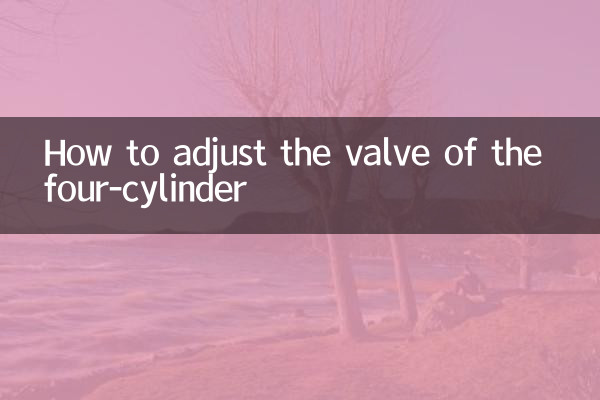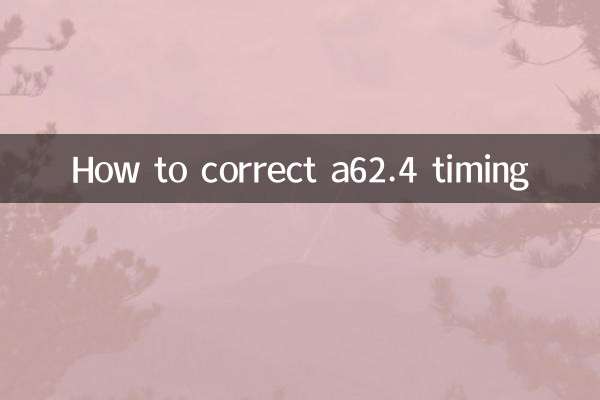How to adjust the valve of the four-cylinder
In automobile repair and maintenance, valve adjustment is an important technical operation. Proper valve clearance adjustment ensures smooth engine operation, improves fuel efficiency, and extends engine life. This article will introduce the valve adjustment method of the four-cylinder engine in detail, and attach structured data for readers to understand.
1. The importance of valve adjustment

Valve lash is the gap between the valve stem and the rocker arm or camshaft. If the gap is too large or too small, it will affect engine performance:
| clearance problem | possible impact |
|---|---|
| The gap is too large | Insufficient valve opening, reduced power, and increased noise |
| Gap too small | The valve is not closed tightly and combustion is insufficient, which may lead to valve ablation. |
2. Preparations before adjustment
Before starting to adjust the valve, you need to make the following preparations:
| Tools/Materials | Purpose |
|---|---|
| feeler gauge | Measure valve clearance |
| wrench | Tighten or loosen the adjustment screw |
| Engine Manual | Query the valve clearance standard value of a specific vehicle model |
3. Valve adjustment steps
The following are detailed steps for four-cylinder engine valve adjustment:
| steps | Operating Instructions |
|---|---|
| 1. Determine the top dead center | Rotate the crankshaft so that the first cylinder piston is at the top dead center of the compression stroke. |
| 2. Measure the gap | Use a feeler gauge to measure the clearance of a specified valve |
| 3. Adjust the gap | Loosen the locking nut, turn the adjusting screw to the appropriate clearance and tighten it |
| 4. Verify adjustments | Re-measure the gap to ensure compliance with standards |
| 5. Repeat the operation | Adjust the valves of other cylinders in the firing order |
4. Precautions for valve adjustment
When adjusting the valve, special attention should be paid to the following points:
| Things to note | Description |
|---|---|
| engine temperature | Adjustments should be made when the machine is cold |
| Adjust the order | Must be carried out in the order specified by the manufacturer |
| clearance standards | Different models and different valves (intake/exhaust) may have different standards |
5. Valve clearance reference values for common models
The following are the valve clearance reference values of several common four-cylinder engines (cold engine state):
| car model | Intake valve(mm) | Exhaust valve(mm) |
|---|---|---|
| Volkswagen 1.8T | 0.20-0.30 | 0.25-0.35 |
| Toyota 2ZR | 0.15-0.25 | 0.25-0.35 |
| Honda L15 | 0.18-0.22 | 0.23-0.27 |
6. Professional advice
For car owners who are not familiar with mechanical operations, it is recommended to leave the valve adjustment work to professional technicians. Improper adjustment can cause serious damage to the engine. Regularly checking the valve clearance is an important measure to keep the engine in good condition. It is generally recommended to check every 30,000 kilometers or in accordance with the requirements of the maintenance manual.
7. Summary
Properly adjusting the valve lash of a four-cylinder engine requires patience and meticulous work. Through the structured data display in this article, we hope to help readers better understand the key points and processes of valve adjustment. Remember, before performing any engine repair work, always refer to your vehicle's service manual to ensure you are using the correct parameters and procedures.

check the details

check the details